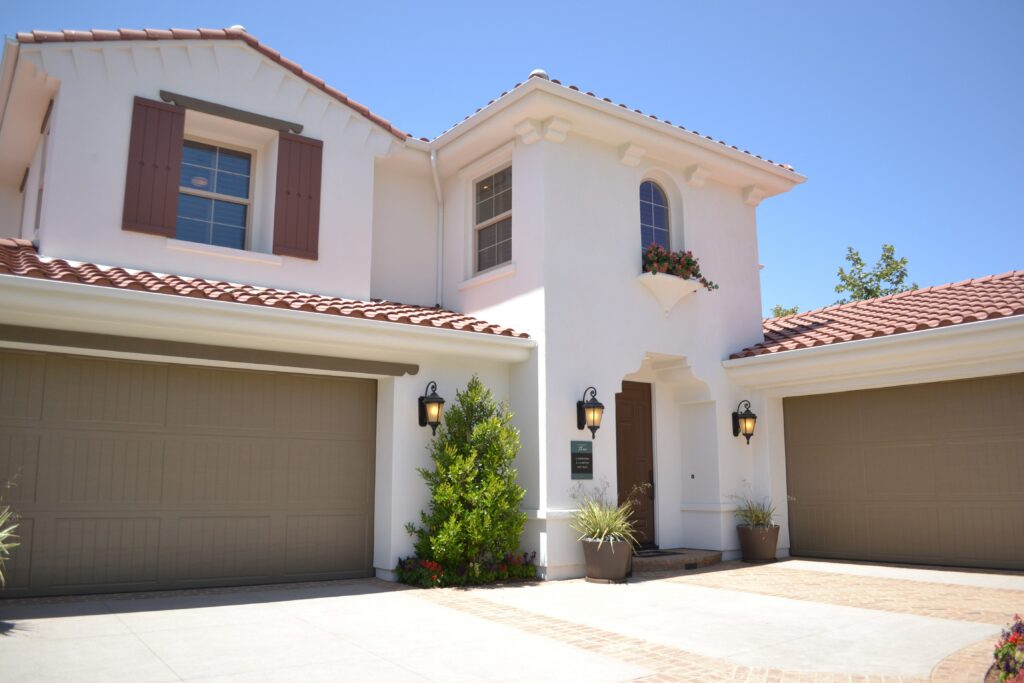It was about in 2019 when I transferred my productivity Zone from my bedroom (booth Installed in my room) to my Garage. I soundproofed my Garage in 1st half of the year and there is a sound reduction of almost 60%. Later in the same year, I started to find a solution to soundproof my Garage more efficiently.
After two to three months of my research, I found Some great solutions I implemented in the garage and further enhanced the sound quality by more than 90%.
This let me decrease the sound level from (Before the seal of the Garage Door) by 60% to 90%.
My primary motto was to improve the sound quality but it helped me with many things aside from this like protection from harsh climate, enhancing my productivity, and many more.
So, in this article, I will illustrate my whole journey “How I sealed the door of my Garage?”
Here’s the thing I have done to Seal Garage Door.
Perquisites before Soundproofing of Garage Door:

Here’s the basic thing to consider before starting Soundproofing of the Garage Door. These are the same I considered:
Inspect your Garage Door:
Inspection of the Garge door is very important, it helps you to find the exact conditions of your door. It helps you to find where exactly cracks, gaps, or holes are present that let a noisy Garge.
In my case, I found more than 5 cracks in my Garge Door which I repaired before proceeding ahead.
“Fun Fact: 99% of cases – Holes in the Glass Door are a major issue for soundproofing and the most prominent reason for the Noise in the Room.”
Choose the Right Materials:
Selection of the right Quality material is very important when it comes to soundproofing your garage door.
Some of these materials include mass-loaded vinyl, acoustic panels, and insulation foam. We have done Some research for You and found Some of the highest quality materials are:
Mass-loaded vinyl: Noise Grabber Mass Loaded Vinyl 2 LB MLV 10+ Sizes, TMS Mass Loaded Vinyl
3. Consider the Type of Garage Door:
Different garage door types require different soundproofing methods. If you have a wooden door, you may need to consider adding mass-loaded vinyl or insulation foam. On the other hand, if you have a steel door, you may need to use acoustic panels.
Things To do to Seal Garage Door:

A garage door has almost all types of openings – The end of the side of the door, Crack in the Door, and up and bottom side of the garage door. So, we need to seal these openings.
To seal these openings, I followed these steps.
Seals Bottom of Gate of the Garage:
A sealed garage door’s most significant benefit is its ability to prevent dust, debris, and sound from entering your garage. This is especially important if you use your garage as a workspace. In my case, this helped my air Quality to improve by 15% more.
Sealing the bottom of your garage door prevents dirt and other particulates from seeping into your space, making it much easier to keep clean and safe. Additionally, a sealed garage door can also help you control the temperature and humidity levels in your garage, which is essential for keeping your tools and other equipment in top condition.
How to seal the bottom of your garage door:
- Measure the length of your garage door’s bottom edge.
- Purchase a garage door threshold seal that matches the length of your garage door.
- Clean the area where the seal will be installed, removing any dirt, debris, or rust.
- Apply adhesive to the back of the seal and attach it to the bottom edge of your garage door.
- Make sure the seal is firmly attached and that there are no gaps or spaces between the seal and the floor.
Consider the Structure of the Garage Door:
Garage doors are generally made up of in different configurations such as single-panel, sectional, and roller doors. They are made up of several parts, including the door panel, tracks, torsion springs, hinges, and rollers. All these parts contribute to the overall structure of the garage door. To block out unwanted sounds, it is essential to understand the role of each component in sound transmission.
Door Panel
The door panel is the most visible part of the garage door and its primary function is to provide security and insulation. It is usually made of metal, wood, or fibreglass. A well-insulated door panel can absorb sound waves and prevent them from entering your home.
Tracks and Hinges
The tracks and hinges are responsible for the smooth operation of the garage door. They should be well-maintained and lubricated to reduce noise and prevent vibrations.
Torsion Springs and Rollers
The torsion springs and rollers help in lifting and lowering the garage door. They also play a crucial role in reducing noise. Proper lubrication can significantly reduce the amount of noise produced when the door is opened or closed.
Materials to Consider for Your Door
The choice of material is essential when it comes to choosing a sealed garage door. Here are some materials to consider:
Steel
Steel is a popular choice for garage doors due to its durability and strength. However, its sound insulation properties are not as good as other materials. To enhance the soundproofing of a steel garage door, it is important to choose one with a high R-value.
Wood
Wooden garage doors are beautiful and offer good insulation properties. However, they are more susceptible to moisture and require regular maintenance to prevent rot and cracks that can affect their soundproofing.
Fibreglass
Fibreglass garage doors are lightweight, durable, and require minimal maintenance. They are also excellent in sound insulation properties and can reduce noise by up to 50%.
Insulation
Regardless of the material, an insulated garage door can help block out unwanted sounds. The insulation can be in the form of foam boards, reflective foil, or blown-in insulation. Be sure to check the R-value of the insulation, which measures how well it resists heat transfer and noise transmission.
Fill the Crack in the Door
One of the main culprits for letting unwanted sounds into your home is a poorly sealed garage door. When the garage door is not correctly sealed, external sounds will easily pass through the gaps in the door.
Causes of Cracks
There are several reasons why your garage door may have a crack. It may be due to warping, wear and tear, or poor installation. Whatever the cause, it’s important to address the issue to prevent further damage to your garage door.
Importance of Sealing
By filling the cracks in your garage door, you create a barrier that stops outside noise from entering your garage and ultimately your home. In addition to keeping noise pollution at bay, sealing your garage door provides many additional benefits, including increased energy efficiency and improved security.
Insulate Your Garage Door
Another way to block out unwanted noise is to insulate your garage door. This process involves adding additional layers of insulation to the door’s interior. Insulating your garage door is an effective way to stop sound waves from penetrating your garage and entering your home.
Benefits of Insulation
Aside from reducing noise, insulation also improves the energy efficiency of your home. A well-insulated garage door will help keep your home warm during the winter months and cool during the summer months. This will ultimately lead to savings on your energy bills.
Types of Insulation
There are several types of insulation available for garage doors. Some of the most popular include fibreglass, foam board, and reflective foil. Each type of insulation has its pros and cons, so it’s important to research which type of insulation will work best for your garage door.
Benefits of a sealed garage door:
- Sound insulation: A sealed garage door can significantly reduce the amount of noise that enters or leaves your garage, making it ideal for music studios, workshops, or even bedrooms located above or adjacent to your garage.
- Improved air quality: A sealed garage door can help keep your garage free of dust, pollen, and other airborne contaminants, making it safer and healthier for your family and pets.
- Energy savings: A sealed garage door helps regulate the temperature and humidity levels, reducing the cost of heating and cooling your garage, and the rest of your home.
- Enhanced security: A sealed garage door provides an extra layer of protection against intruders, preventing them from quickly gaining access to your home.
Video: SoundProofing Garge Door

Born in Delhi (INDIA), I created this to share my 4 Years of experience in the SoundProofing Industry.